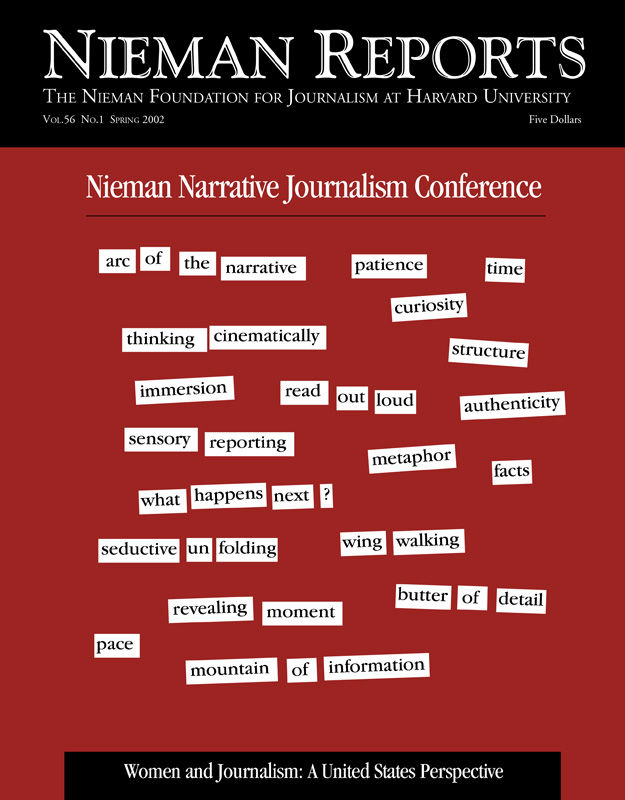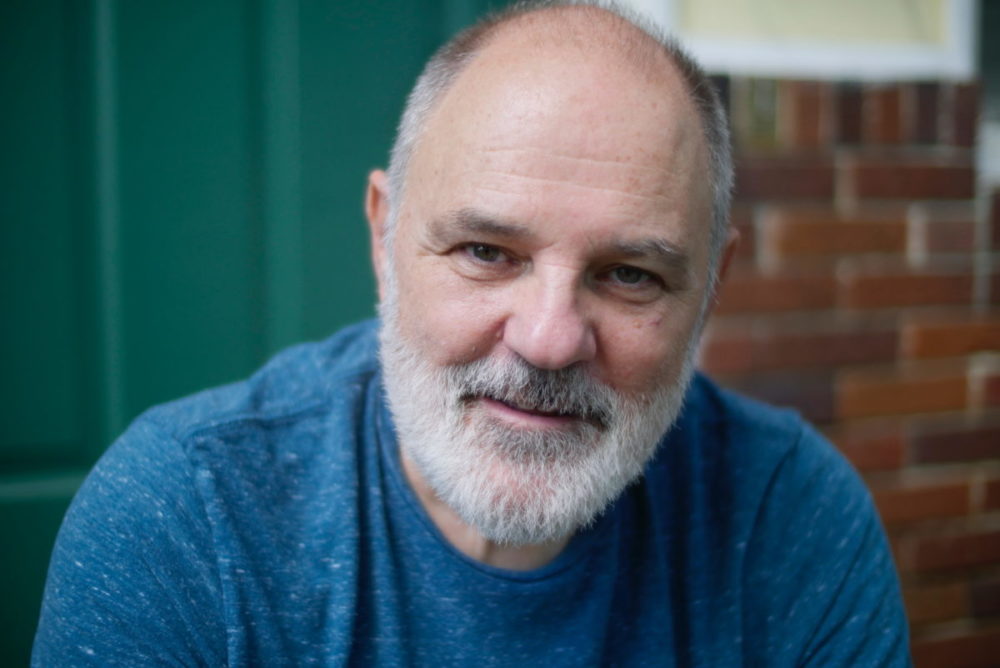Bruce DeSilva—The Voice
If the voice isn’t appealing, the game’s over before it starts. Every story that you write speaks to the reader in a voice. And readers hear the writer talking to them when they read.
Reading is something you think you do with your eyes, but really you’re doing it with your ears. And how that voice sounds has everything to do with whether you’re going to enjoy that story, whether you’re going to read it to the end, whether you’re going to want to ever read anything again by that same writer.
An appealing voice is going to draw you into and all the way through a story on a subject you didn’t know you cared about. An unappealing voice can drive readers away from stories that they care about passionately, from subjects that are important to them.
It’s voice more than anything else that also determines who you want to spend time with in conversation and who you want to spend time with on the page.
In news writing, you know what goes wrong with the voices in the stories because you read these stories all the time. There’s a combination of unfamiliar word choices and word orders that at its worst becomes journalese, which I hope everybody’s been warning you about over and over again throughout your career. It’s painful—painful to read. And the very best stories, no matter how important the concept is, no matter how good the story line is, how great the tale is, it’s going to be destroyed if the voice is boring and you just can’t stand spending time with the storyteller. The worst voice is the newspapers, and there are so many of them. They’re just unnatural to the ear of the reader. They’re so unnatural, they sound like a foreign language.
We do a lot of strange things in newspapers with word order. For example: putting long, long prepositional phrases at the beginnings of sentences. You wouldn’t write that way in a letter; you wouldn’t do that in a good nonfiction magazine,s but newspapers do it constantly. You are 23 words into the story and there’s no subject and no verb yet, which means the sentence isn’t about anything yet and nothing’s happened in it. Don’t do that. It’s not English. Nobody writes or talks that way.
Does this mean you can’t begin a sentence with a prepositional phrase? Of course not. They work just fine, usually when they’re smart, when they’re about time and place. An example of one that works really well: “In the beginning, God created Heaven and earth.” That one’s fine. You notice it does not say, “In a surprise move intended to bring creation into existence from the lifeless void, comma.” If you do that, it doesn’t matter how good the rest of the piece is, the rest of its elements; nobody’s going to read it.
We put the time elements in the wrong place all the time—the simple word order thing that we do. “Police yesterday arrested six men.” If this sounds right, you’ve spent way too much time reading bad newspaper copy.
Sometimes we put modifying phrases in the wrong place. This is just the first part of a sentence from a news story, and it puts both a time element and a phrase in the wrong place: “President Bush today nominated as his drug czar John P. Walters.” “I today ate for my breakfast bacon and eggs.”
If you’re going to write that way, don’t bother writing. Do something else. A lot of strange words, too, in journalism, words that tend to be used over and over and over and over again in situations that normal people wouldn’t use them at all. For example, if your verbs are always “fueled,” “sparked” and “spawned,” I don’t want to read your story.
We tend to make these same strange word choices over and over again, so that every time a public official sends a note to another public official, the note is “fired off.” Mayors never get angry or disturbed. They always “have their ire piqued.” The mercury is always “plummeting” or “skyrocketing” in weather stories. Nobody talks this way. Don’t do that.
You need to be creative. You need to be interesting. You must not drone on. You must find your own voice as a writer and sound like yourself in print. You must have the courage to get away from that horrible journalese voice that will destroy your story no matter how important and lofty the concept is. No matter how good the tale is, it’s going to destroy it. You must find your own voice and have the courage to write in it.
Chip Scanlan—The Theme
If you don’t structure the story right, the reader’s going to be lost. We spend a lot of time reporting. We spend a lot of time writing. We don’t spend enough time thinking. I always used to think that I over-reported every story and that was the reason why I couldn’t make deadlines, and that was the reason my story was 50 inches longer than it was supposed to be, and that’s why I begged my editors for another hour, day, week, month.
I realize now that I didn’t over-report. I under-thought. Nora Ephron says, “Who, what, where, why means nothing if you don’t know what the point is.”
To get a story that has a cohesive quality that draws you in, it is the product as much of the writer’s mind as it is the writer’s voice. What we see there or sense in the architecture underneath the story is the writer’s intellect.
What’s the point? Why is this story being told? What does it say about life, about the world, about the times we live in? Newspaper writing, especially on deadline, is so hectic and complicated—the fact gathering, the phrase finding, the inconvenience, the pressure—that it’s easy to forget the basics of storytelling; namely, what happened, and why does it matter?
Those four questions—Why does it matter? What’s the point? Why is the story being told? What does it say about life, the world, the times we live in?—I really believe that those four questions should be in 72-point type above every terminal in a newsroom. They should be above your machine at home. Because those are the readers’ questions. That’s what readers ask when they start reading a story. My favorite of the four is the last one: What does it say about life, about the world, about the times we live in? I don’t think the readers actually come to stories expecting it, because so rarely do they get it.
But if you actually impose that critical thinking upon your story before you write it, as you’re writing it, as you’re rewriting it, what you do is you give that story a rock-hard spine. And it’s the spine of theme. And so instead of concept, I would say it’s not the voice, it’s not the story, it’s the theme.
Every time you go out on assignment, ask yourself, what’s the life truth at work here? What’s really going on? Anne Hull of The Washington Post did a wonderful story about the rape of an Amish girl by “an Englander” in the Midwest. And I remember hearing her talk about this story and saying, “You know, I realized it was about forgiveness.” And that, I believe, is the kind of thinking that makes a story powerful.
When you think about the mountain of information you’ll collect for a narrative—this huge pile—it’s like going into the woods and harvesting maple sap. How many gallons of maple sap does it take to make a gallon of maple syrup? It sometimes approaches 60 gallons of maple sap to make a gallon of maple syrup. And it’s critical thinking.
My favorite definition is that critical thinking is thinking about your thinking while you’re thinking, in order to make your thinking better. Kind of sounds like working on deadline, doesn’t it? It is that act of an active intellect confronting material and asking, “What the hell does this mean?”
We often say that we’re in the news business. But we’re in the meaning business. More than ever that’s what we are selling people. We are trying to help them understand what the world is doing right now. And I would argue that to get yourself to the point where you can give voice to your story or decide what your story line is, your structure, that the first thing you do is figure out what it’s about, what does it mean, and why does it matter.
Jon Franklin—The Story
When we get to a point in the writing business where we want to make the next step into narrative, we run into a big problem right up front: The whole idea of what the story is is very much up for grabs in a newsroom.
Because what’s a story? Sometimes we talk about “the story.” And when you see a bunch of old guys sitting in a bar talking about the Watergate story, they’re not talking about a story they did. They’re talking about this whole Watergate narrative, and they’re talking about what it meant.
And what it meant was not something very clear at the time. It wasn’t clear at all. At the time, you know, all people could do was just quote whoever said what or did what on any given day, and the story just sort of unfolds, and we were all spectators, much like what’s happening in Afghanistan now.
So you’ve got this reporter. Maybe he has some idea of what this story means, and he has 16 notebooks full of stuff. And what does he do with it? And the last thing he knows how to do is put it into some kind of a structure—a structure, a framework. I got so involved in it because as a child I was a pretty good storyteller. But after going to journalism school and spending a lot of time in journalism, I had no confidence, I had no story vision, I had none of that.
I actually had to go back to textbooks written about short stories in the 1920’s and ’30’s and ’40’s in order to find that. Obviously, a story’s no good without a meaning. And you have to have a voice to tell it. But you have to have the story. You know, a voice without a story is incredibly vacuous.
And I’m going to argue that the reason that the beginnings of stories are often so convoluted is that writers don’t have the vaguest idea of where they are going. So they try to put half the story in front of it. They don’t know what to put in their lead and what not to put in their lead. They don’t have an ending.
If you actually have a story, if you have a structure—which is what story is—then there is a sense in the very first paragraph. There are no extra words, because the writer knows exactly where he is going. The reader doesn’t know where he is going, but the reader senses that the writer knows. Notice that about some piece that you like. The front of it’s clean and there is a sense that there’s a current that starts to flow immediately. It’s almost like there’s this sort of black hole at the end of it—which is sucking the writer along. And that means you’ve got to have a structure.



